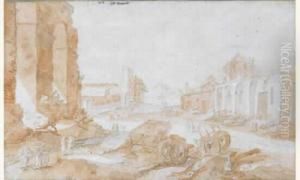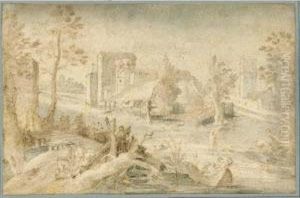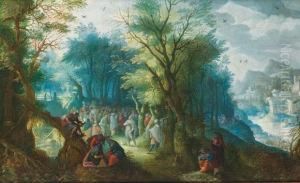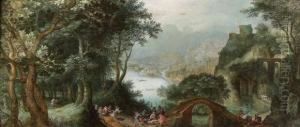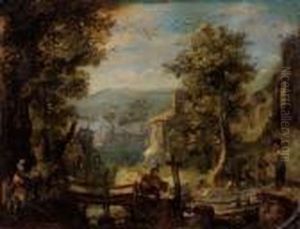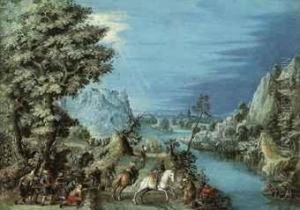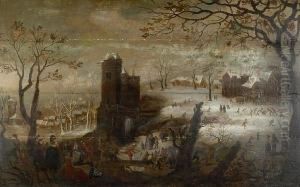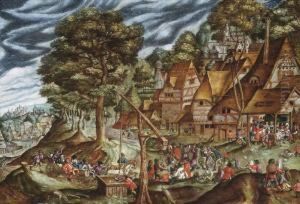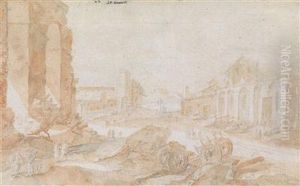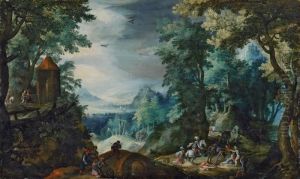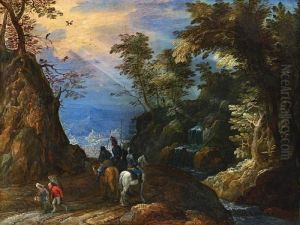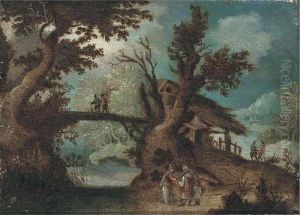Pieter Ii Stevens Paintings
Pieter II Stevens was a Flemish artist, known primarily for his work as a painter, draughtsman, and designer of tapestries in the late 16th and early 17th centuries. Born into the vibrant artistic landscape of the Southern Netherlands, Stevens was part of a period that bridged the Renaissance and Baroque eras, contributing to the rich artistic legacy of the region. His life and work were deeply influenced by the social, political, and religious upheavals of his time, particularly the tensions between the Protestant North and the Catholic South that characterized the Eighty Years' War. Despite these challenges, Stevens managed to carve out a successful career, demonstrating remarkable adaptability and creativity in his artistic pursuits.
Stevens' oeuvre is characterized by meticulous attention to detail and a keen eye for the complexities of human and natural forms. He excelled in creating landscapes and scenes that captured not only the physical beauty of the world but also its emotional and spiritual dimensions. His works often featured allegorical and mythological themes, reflecting the intellectual currents of his time and his own deep engagement with the cultural heritage of the Renaissance.
Throughout his career, Stevens collaborated with many prominent artists and patrons of his era, contributing to significant projects that included the design of tapestries, altarpieces, and illustrations for published works. These collaborations allowed him to influence and be influenced by the broader artistic movements of his time, integrating elements of Italian Renaissance art and the emerging Baroque sensibility into his own distinctive style.
Stevens' legacy is preserved in various museums and collections across Europe, where his works continue to be studied and admired for their beauty, technical skill, and historical significance. Despite the challenges of his era, his art reflects a profound optimism and a deep belief in the enduring power of human creativity and expression.
